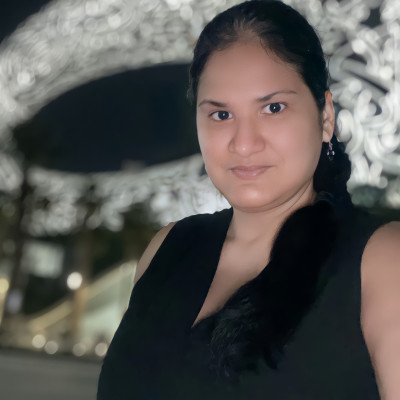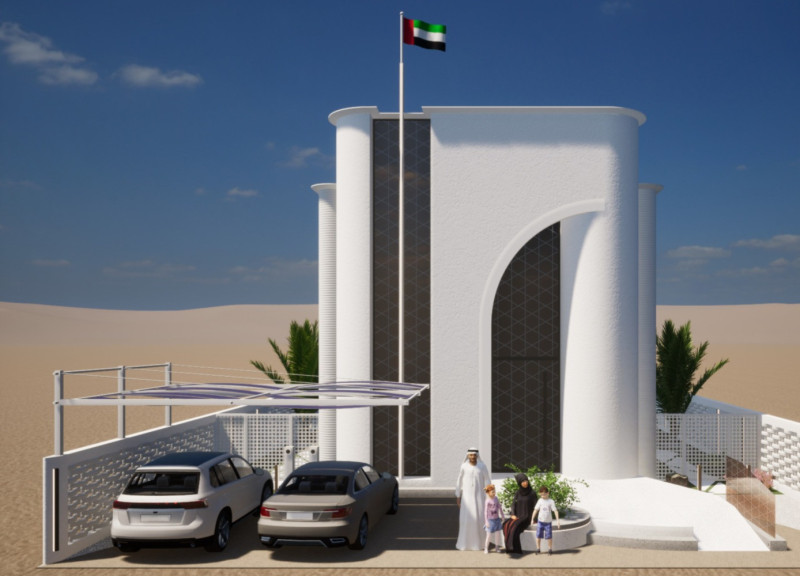5 key facts about this project
The architecture emphasizes sustainability through the choice of materials and energy-efficient technologies. Employing 3D-printed concrete and Glass Reinforced Concrete (GRC), the structure showcases durability and reduces construction waste. Solar panels on the rooftop exemplify the project's commitment to renewable energy.
The layout comprises distinct areas dedicated to various functions. The open-plan ground floor includes a living area that merges the kitchen and dining space, promoting family interaction. A guest room, complete with an attached bathroom, ensures comfort for visitors. Additionally, a maid's room is strategically placed for operations without intruding on private spaces. The first floor contains the master suite and two additional bedrooms, configured to allow for both personal and communal use.
The project's distinctive design approach lies in its blending of traditional Emirati architectural motifs with modern sustainability principles. Its curved surfaces and geometric patterns resonate with cultural significance while enhancing ventilation and natural lighting. This dual focus on heritage and innovation is reflected throughout the design.
Sustainable features integrate passive cooling strategies, maximizing airflow while minimizing reliance on mechanical solutions. The incorporation of water-efficient fixtures and advanced drainage systems addresses environmental concerns. The landscaping complements the architecture, providing green areas that contribute to thermal comfort and improve the aesthetic experience of the residence.
This project offers a comprehensive architectural solution that prioritizes both cultural relevance and modern functionality. For those interested in an in-depth exploration of its design, architectural plans, architectural designs, and architectural sections are available for review. These elements reveal further insights into the innovative ideas and thoughtful planning that define the "House of the Future."


 Diana Marcela Enriquez Cuevas
Diana Marcela Enriquez Cuevas 























